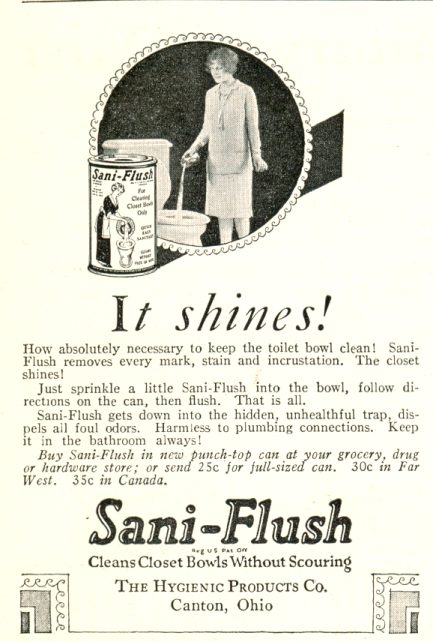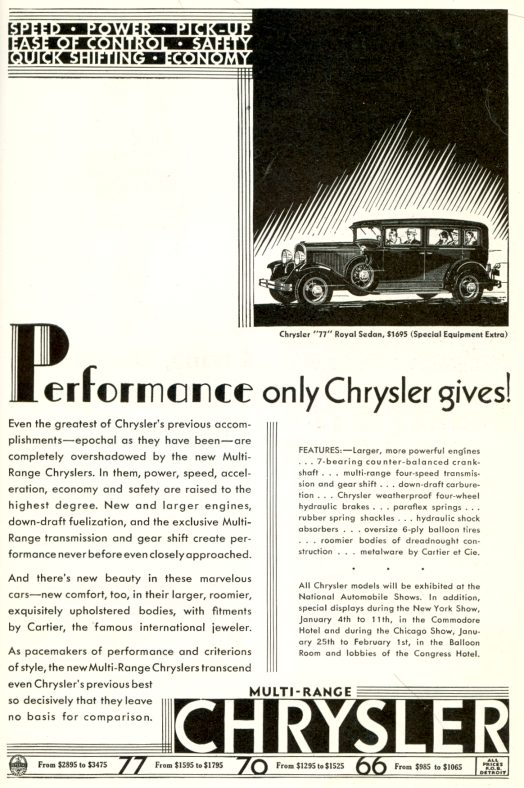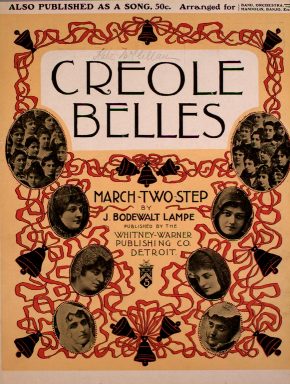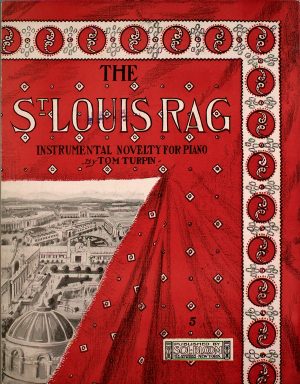

July 2008
July 24
This week's Hit of the Week is brought
to you by

"Ride The Greyhounds"
To All Texas Cities
Southland Greyhound Lines, Inc.
(from 1931 ad)
Note: I am very pleased to welcome
back guest contributor Eddie The Collector. Eddie will be providing
both the main update as well as the "Extra." The records and
commentary are Eddie's - my only contribution was to transfer and digitalize
the recordings. You may read more about Eddie as well as view
his photo and contact information by clicking here.
Although superficially viewed as
a state preoccupied with oil wells and cowboys , Texas was a significant
contributor to the jazz music scene during the 1920s primarily from recordings
made on Okeh of the territory bands of Jack and Fred Gardner and James
Maloney (aka Jimmie Joy), all students at the University of Texas during
the early 1920s. The bands of Jack and Fred Gardner have been discussed
in earlier HOW Updates and this week we're honoring the memory and music
of Jimmie Joy.
James Monte Maloney was born in
1902 and arrived on the University of Texas campus in 1921 where he took
over the leadership of a five piece band. While playing at the Joyland
Park in Galveston, Texas, park management billed the band as Jimmy's
Joys. Because so many people began referring to him as "Jimmy Joy"
Maloney adopted it as his professional name and eventually his legal name.
Fellow Texan Smith Ballew, who would
also make his own name in the music world of the later 20s and into the
30s, entered the University of Texas in 1922 and was the band's banjo player
periodically during this time. Ballew was in the band in February 1923
when it presented a half hour jazz concert over San Antionio station WOAI
which was then billed as the "Southern Equipment-Express-Evening
News radio-phone station." The newspaper article announcing the
broadcast also indicated that the band had just accepted an offer of 40
weeks on the big time vaudeville circuit.
The band evolved into one of the
favorites in the Midwest, proving to be a fine hotel and ballroom orchestra
- Joy played both the sax and clarinet and would sometimes surprise audiences
by playing two clarinets simultaneously after the fashion of Wilbur Sweatman.
He also sang the blues in a manner reminiscent of another fellow Texan,
Jack Teagarden.
The band played regularly at top
hotels such as the Muehlbach in Kansas City, the Peabody in Memphis, the
Baker and Adolphus Hotels in Dallas, and the St. Anthony Hotel in San Antonio.
Joy made occasional trips to the East Coast and was playing at the Casino
Gardens in Santa Monica, California in the early forties.
Before she went on to become one
of the best-selling female recording artists of the 1950s, Patti Page was
the Jimmy Joy Orchestra's vocalist and she toured with the band from 1946
- 1947.
Such was Texas's pride in Joy that
he was made an honorary Texas Ranger. Joy was also made an honorary
Kentucky colonel and for three consecutive seasons his was the official
orchestra of the Kentucky Derby. Joy moved to Dallas permanently
in 1949 and was semi-active as a band leader during the fifties.
He died in 1962 at the age of 59 - one of his pall-bearers was Herman Waldman,
another fine musician and band leader from the 20s and 30s.
Be
Yourself
Jimmie Joy's St. Anthony Hotel Orchestra Recorded
in Kansas City 1925
(Okeh 40420-B)
Matt from College Station contributes
the first two sides. It was customary to append the name of the band's
current location, the St. Anthony Hotel, to the orchestra's name - the
St. Anthony, a beautiful, historic structure, endures in business today
in San Antonio, Texas. The recording sessions for this record on
May 1, 1925, occurred in Kansas City, Missouri while the band was touring.
This side has plenty of bounce accompanied by a hot trumpet in the middle.
Wild
Jazz
Jimmie Joy's St. Anthony Hotel Orchestra Recorded
in Kansas City 1925
(Okeh 40420-A)
The "A" side of this record, recorded
on the same day, is true to its name. It is by far the hotter, more
energetic side - we hear solos by each instrument with Joy playing his
clarinet right in the middle of the record. This arrangement provides
one of those rousing, only-in-the-20s endings that makes this music so
much fun.
Fallin'
Down 
Jimmy Joy's St Anthony Hotel Orchestra Recorded
in Dallas Texas 1925
(Okeh 40494-B)
The next two sides are from my own
collection. The Joy Orchestra was still located at the St. Anthony
Hotel in San Antonio at this time, but these recordings were made in Dallas
on October 19, 1925. Typical of the mid-20s with several Charleston
passages included.
Red
Hot Henry Brown
Jimmy Joy's St Anthony Hotel Orchestra Recorded
in Dallas Texas 1925
(Okeh 40494-A)
This is a more familiar tune, recorded
in 1925 by virtually every popular orchestra extant.
- Eddie The Collector
If you have questions or
comments about the music or would simply enjoy interacting with friendly
people who share your interest in it, join in the conversation on Dismuke's
Message Board.
EXTRA
This section will present
78 rpm recordings that do not fall within the range of the vintage pop
and jazz fare that I usually present. Here I will feature
recordings from a wide variety of eras, musical genres and nationalities
as well as occasional spoken word recordings.
During the mid to late 20s, amongst
all the fads and diversions the public went wild over, college life was
one of the most celebrated - was there ever a more wonderful time to be
in college than from 1925-1929? Countless popular songs were written
extolling the Collegiate experience and its companion institution of football.
This was no less true here in Texas amongst three of the greatest institutions
of what until recently was called the Southwest Conference - Texas A&M
University in Bryan/College Station, Southern Methodist University in Dallas
and the University of Texas at Austin. All three schools had their
fight songs recorded as dance records on Brunswick in 1928 as follows:
Peruna
Clines Collegians
1928
(Brunswick 4162)
This is one of the more unusual
names for a college fight song. Peruna is the name of a black Shetland
pony which attends every SMU football game as its mascot - a tradition
since 1932 - and they are currently on Peruna VIII. However, the
name has a much more interesting history and origin. In the early
20th century, Peruna was one of many patent medicines containing mostly,
if not all, alcohol - which made it a greatly applied and sought after
elixir during Prohibition days. Thus the lyrics "She'll be
loaded with Peruna" - based on the tune "She'll Be Coming 'Round the Mountain."
Durward J. Cline, who died in 1982,
led bands in Dallas from the 1920s through at least the 1960s and perhaps
longer. Cline's Collegians was composed of students and ex-students
of SMU. This record was recorded in Dallas by Brunswick on Saturday,
October 20, 1928, two weeks after SMU played Army. It is truly
a hot recording, equal in quality to any of the mainstream popular dance
bands of the era and not at all what one would expect from a college fight
song
The
Aggie War Hymn
Colonial Club Orchestra
1925
(Brunswick 3924)
Texas A&M University and the
University of Texas are less than 100 miles apart, but there could not
exist a more bitter rivalry between two cultures. Texas A&M represents
a conservative, traditional values, military-oriented environment while
the atmosphere at the University of Texas is decidedly liberal, at least
today. So what could be a better idea than coupling the fight songs
of these two arch-rivals, using Bob Haring's Colonial Club Orchestra on
April 21, 1928?
"The Aggie War Hymn" was written
by J.V. "Pinky" Wilson, one of many Aggies who fought in World War I. Wilson
combined several yells (the Aggie version of cheers) then in use at the
time into a song called "Good-bye to Texas University" - a rather provocative
title. It was originally written as a ballad set to the music
of an old ragtime song, "Hello, My Coney Island Baby," and was sung frequently
by a quartet Wilson organized after returning to Texas A&M after the
war. Today, this quartet is at least represented in spirit by the Singing
Cadets, a chorale group, known as "The Voice Of Aggieland" open to any
male Texas A&M University student.
One night in 1920, several of the
Aggie Yell Leaders heard Wilson's quartet singing the song, and asked him
to let them submit it in a contest for a new fight song to be held that
fall (after Wilson graduated). Wilson agreed, and the song, considerably
jazzed up - what else would one have expected in 1920 - was officially
adopted that fall under its current title.
The song is noted for beginning
with Recall, an old bugle call, in two different keys. This is a nod to
Texas A&M's past as a military school. Indeed, for many years, the
Fightin' Texas Aggie Band halftime show has begun with the drum major shouting
"Recall! Step off on 'Hullabaloo!'" When the song is sung during a game
at Kyle Field, after the second verse, everyone links arms and sways, causing
the upper deck (including the press box) to sway. This is called "sawing
Varsity's horns off" and usually unnerves football writers who are covering
their first Aggie game.
The beginning words of the song
refer to the sound of a train crossing the tracks in College Station, Texas,
home of Texas A&M: "Hullabaloo, caneck, caneck! Hullabaloo, caneck,
caneck!" - I'd always wondered about those nonsense words - now they make
perfect sense!
In 1928, the year of this
recording, Wilson wrote another verse at the request of several Aggie students
who thought the original was too focused on the Aggies' rivalry with the
University of Texas. This verse is now the first verse of the song but
never caught on, in part because many felt it sounded too much like an
Ivy League song - but is present in this recording. To this day, the second
(original) verse is usually sung twice.
The second verse opens with "Good-bye
to Texas University". These words were chosen since Aggies traditionally
refer to their principal athletic rival, the University of Texas, as "texas
university", or "t.u." - all in disrespectful lower caps.
Full Lyrics
Hullabaloo, Caneck!
Caneck! Hullabaloo, Caneck! Caneck!
First Verse
All hail to dear old Texas A&M,
Rally around Maroon and White,
Good luck to the dear old Texas
Aggies,
They are the boys who show the
fight.
That good old Aggie spirit thrills
us.
And makes us yell and yell and
yell; -
So let's fight for dear old
Texas A&M,
We're goin' to beat you all
to -
Chig-gar-roo-gar-rem!
Chig-gar-roo-gar-rem!
Rough! Tough!
Real stuff! Texas A&M!
Second Verse
Good-bye to Texas University.
So long to the Orange and White.
Good luck to the dear old Texas
Aggies,
They are the boys who show
the real old fight.
The eyes of Texas are upon you.
That is the song they sing so
well,
So, good-bye to Texas University,
We're goin' to beat you all
to -
Chig-gar-roo-gar-rem!
Chig-gar-roo-gar-rem!
Rough! Tough!
Real stuff! Texas A&M!
Eyes
Of Texas
Colonial Club Orchestra
1925
(Brunswick 3924)
"The Eyes of Texas" is the fight
song of the University of Texas at Austin and is set to the tune of "I've
Been Working on the Railroad." The song was written in 1903 by John Sinclair.
The lyrics were intended to poke fun at University President Colonel Prather
who had attended Washington & Lee College, where Robert E. Lee
would frequently tell his students "The eyes of the South are upon you."
Prather was known for including in his speeches a similar admonition, "The
Eyes of Texas are Upon You," meaning that the state of Texas was watching
and expecting the students to go out and do great things. Prather enjoyed
the song and promoted its usage. He died not long thereafter, and the song
was played at his funeral. After this, the song achieved its complete dignity
and meaning.
The song is also sung at momentous
occasions such as graduation and even solemn occasions such as funerals.
This arrangement has the instrumental
parts played in 4/4 time, while the vocal sections are rendered in the
more traditional 6/8 march time - the last instrumental is then played
in 6/8 time.
- Eddie The Collector
If you have questions or
comments about the music or would simply enjoy interacting with friendly
people who share your interest in it, join in the conversation on Dismuke's
Message Board.
July 17
This week's Hit of the Week is brought
to you by

Sani-Flush
Cleans Closet Bowls Without Scouring
(from 1927 ad)
Betty
Ben Selvin And His Orchestra
1926
(Brunswick 3172-A)
My
Regular Girl
Ben Selvin And His Orchestra
Ben Selvin, vocal
1927
(Brunswick 3487-A)
Here are a couple of "hot dance"
selections by the Ben Selvin Orchestra. Selvin is listed
in the Guinness Book of Worlds Records as having recorded more 78
rpm sides than any other artist. He began his bandleading career
in the late 1910s. Selvin's 1919 recording of "Dardanella" was one
of the top selling records of its era with over five million copies sold.
In the late 1920s and early 1930s, Selvin headed up the in-house studio
orchestra for Columbia records.
- Dismuke
If you have questions or
comments about the music or would simply enjoy interacting with friendly
people who share your interest in it, join in the conversation on Dismuke's
Message Board.
EXTRA
This section will present
78 rpm recordings that do not fall within the range of the vintage pop
and jazz fare that I usually present. Here I will feature
recordings from a wide variety of eras, musical genres and nationalities
as well as occasional spoken word recordings.
Insufficient
Sweetie
Salt And Pepper
1924
(Cameo 687 mx 1264)
Nobody
Knows What A Red Hot Mama Can Do
Salt And Pepper
1924
(Cameo 687 mx 1293)
The only information I have been
able to find about this mid-1920s vocal group comes from Brian Rust's Jazz
Records. Rust identifies the singers as Jack Culley and Frank Curtz.
Rust writes that they were "two American vocalists who played kazoos and
banjos, doubtless in an attempt to emulate the success of the Mound City
Blue Blowers."
- Dismuke
If you have questions or
comments about the music or would simply enjoy interacting with friendly
people who share your interest in it, join in the conversation on Dismuke's
Message Board.
July 10
This week's Hit of the Week is brought
to you by

"Everyone Can Write Shorthand"
SPEEDWRITING, INC
The Natural Shorthand
(from 1929 ad)
Hard
To Get
Herb Gordon And His Hotel Ten Eyck Whispering
Orchestra
1929
(Brunswick 4584)
I
Could Do It For You
Herb Gordon And His Hotel Ten Eyck Whispering
Orchestra
1929
(Brunswick 4584)
Jerico
Herb Gordon And His Hotel Ten Eyck Whispering
Orchestra
1929
(Brunswick 4372)
Then
We Canoe-dlo-oodle Along
Herb Gordon And His Hotel Ten Eyck Whispering
Orchestra
1929
(Brunswick 4372)
Here are some selections courtesy
of regular guest contributor Matt From
College Station of a nice but largely forgotten late 1920s dance band.
Unfortunately , I have not be been
able to find any biographical information about Herb Gordon.
The band's first appearance on records was in 1928 with five recording
sessions for Brunswick between January and September. The records
were issued under the name of "Herb Gordon's Hotel Adelphia Whispering
Orchestra. The Hotel Adelphia was located in Philadelphia.
When the band returned to the Brunswick studios in May, 1929 it was billed
as "Herb Gordon And His Hotel Ten Eyck Whispering Orchestra."
The Hotel Ten Eyck was located in Albany, New York. After recording
eight sides for Brunswick in 1929, the band was absent from the recording
studios until 1933 when it recorded four sides for the American Record
Corporation which were simultaneously issued on several of the company's
dime store record labels. On these records the band is simply listed
as "Herb Gordon And His Orchestra."
Old newspaper radio listings indicate
that the band was regularly featured on late evening broadcasts on the
NBC Red Network in 1931 and 1932. The band also was featured in late
evening broadcasts on CBS in 1938.
The San Antonio Express on
December 24, 1931 indicates that the band was then performing in Washington
DC
"Three famous dance orchestras
each playing from its respective city, will alternate as features of the
Lucky Strike Dance Hour, this morning, according to an announcement made
by the sponsors. Seymour Simons and his orchestra will play from Cleveland
and Herb Gordon and his orchestra will play from Washington D.C. all three
orchestras being: introduced from New York by Walter Wlnchell, famous gossip
and newspaper columnist. The program will
bo heard from station WOAI beginning
at 9 o'clock."
In June, 1938 the band was appearing
at the Roof Garden at the Onondaga Hotel in Syracuse, New York. In
November, 1939 the band was booked at the Crystal Ballroom in Andover,
Massachusetts - which is the latest newspaper mention I have been able
find about the band.
I would certainly appreciate any
additional information about the band that anyone might have.
- Dismuke
If you have questions or
comments about the music or would simply enjoy interacting with friendly
people who share your interest in it, join in the conversation on Dismuke's
Message Board.
EXTRA
This section will present
78 rpm recordings that do not fall within the range of the vintage pop
and jazz fare that I usually present. Here I will feature
recordings from a wide variety of eras, musical genres and nationalities
as well as occasional spoken word recordings.
Land
Of My Own Romance, Serenade, Absinthe Frappe 
Victor Salon Group
circa 1931
(Victrola 9907-A)
"Selections
From Natoma "
Victor Salon Orchestra
circa 1931
(Victor 9907-B album C 11 10)
Here are some very nice selections
from the great American composer Victor Herbert, again, courtesy of guest
contributor Matt From College Station.
The first recording features a medley
of three Victor Herbert works. "Land of My Own Romance" comes from
Herbert's 1911 operetta The Enchantress. "Serenade" is the
fourth movement of Herbert's 1882 Cello Suite. "Absinthe Frappe"
is from Herbert's 1904 operetta It Happened In Nordland.
The second recording is of selections
from Herbert's 1911 opera Natoma. While Herbert is best remembered
for his operettas, Natoma was a full scale grand opera. The
opera features a number of passages inspired by American Indian and Spanish
music and was not well-received by critics. It was one of Herbert's
least successful works. I will say this much - the Indian passages
give this recording a certain "heaviness" that is not typical in most of
Herbert's works.
- Dismuke
If you have questions or
comments about the music or would simply enjoy interacting with friendly
people who share your interest in it, join in the conversation on Dismuke's
Message Board.
July 3
This week's Hit of the Week is brought
to you by

(Click on image for larger view)
Chrysler Multi-Range
(from 1930 ad)

Leven
Thirty Saturday Night
Earl Burtnett And His Los Angeles Biltmore Orchestra
1930
(Brunswick 4754)
Courtin
Time
Earl Burtnett And His Los Angeles Biltmore Orchestra
1930
(Brunswick 4754)
Earl Burtnett is remembered as a
West Coast band as a result of its affiliation with the Biltmore Hotel
in Los Angeles. But the band also had lengthy engagements at the
Rice Hotel in Houston and at some of the top nightspots in Chicago.
It was in late 1935 in Chicago when Burtnett came down with appendicitis.
Surgery was delayed because Burtnett's appendix had supposedly been removed
by another doctor years earlier. Unfortunately, as a result of the
delay he died as a result of complications at the age of 37.
Both of these recordings come courtesy
of regular guest contributor Matt From College Station. Both
songs were also composed by Earl Burtnett. I think this is a great
version of "Levin Thirty Saturday Night" and enjoy the radio broadcast
style time signal at the beginning.
- Dismuke
If you have questions or
comments about the music or would simply enjoy interacting with friendly
people who share your interest in it, join in the conversation on Dismuke's
Message Board.
EXTRA
This section will present
78 rpm recordings that do not fall within the range of the vintage pop
and jazz fare that I usually present. Here I will feature
recordings from a wide variety of eras, musical genres and nationalities
as well as occasional spoken word recordings.


Creole
Belles
Sousa's Band
1902
(Victor 1182)
St.
Louis Rag
Pryor's Orchestra
1904
(Victor 2783)
Tomorrow is Independence Day here
in the USA. The Forth of July holiday always makes me think of outdoor
concerts of peppy music played by military bands followed by fireworks.
So I thought it would be appropriate to feature recordings by two of the
most famous military bands from the early years of recorded sound.
The old military bands played more than just marches and patriotic music
- they also played ragtime, as evidenced by this week's selections.
Both of these recordings, courtesy
of regular guest contributor Matt From College Station, are from early
7 inch single sided discs. During the very early years of disc
records, 7 inches was the typical record size as opposed to the 10 inch
size which quickly gained popularity and became the standard size of popular
music records for over 40 years. It wasn't until 1908 that
Victor and Columbia introduced double sided records. Matt inherited
these records from a Fort Worth record collector named Rob Robinett and
they are fairly hard to find.
"Creole Belles" composed by J. Bodewalt
Lampe was regularly featured in concert by John Philip Sousa's band.
Ten years after this recording was made, the Sousa band made another recording
of "Creole Bells" for Victor.
John Philip Sousa did not like the
phonograph and considered records to be "canned music." Therefore,
most recording sessions by the Sousa band were, in fact, conducted by Arthur
Pryor who performed with the Sousa band from 1892 to 1903 and was Sousa's
Assistant Conductor. It was Pryor who also introduced ragtime music
into the Sousa band's repertoire. Sousa was not especially fond of
the new style of music and some of the band's musicians thought it was
beneath them. But, because of its increasing popularity, ragtime
became a standard part of performances by Sousa's and other military bands
of the era.
After Arthur Pryor left the Sousa
band in 1903, he became a Music Director for the Victor Talking Machine
Company and conducted over two thousands sides for the company over the
next two decades.
"St. Louis Rag" was composed by
Thomas Turpin. Turpin operated the Rosebud
Bar in St. Louis which became a gathering place for black ragtime musicians
and composers, including Scott Joplin. Turpin wrote "St. Louis
Rag" in 1903 for the St. Louis World's Fair, also known as Louisiana Purchase
Exposition, which was supposed to open that year on the one hundredth anniversary
of the Louisiana Purchase. Instead, the fair was delayed until 1904.
- Dismuke
If you have questions or
comments about the music or would simply enjoy interacting with friendly
people who share your interest in it, join in the conversation on Dismuke's
Message Board.

|


